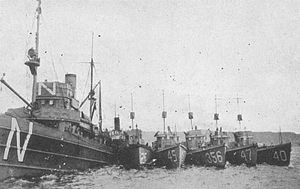One hundred years ago, British writer and teacher James Fairgrieve (1870-1953) wrote Geography and World Power, an important but mostly forgotten work on global geopolitics. Written during the First World War, Fairgrieve’s book sought to “show how the history of the world has been controlled by” geographical conditions.
Fairgrieve was an intellectual disciple of the great British geopolitical thinker Sir Halford Mackinder, and borrowed some of Mackinder’s concepts in formulating his own geopolitical worldview. Fairgrieve factored into his geopolitical analyses topography, location, climate, relative population density, the distribution of energy, the ease or difficulty of movement, and political and social organization.
Geography and World Power traced the impact of geographical conditions on the course of history, beginning with the desert, marsh and steppe lands of Egypt and Mesopotamia; to the near and readily accessible regions of Palestine and Phoenicia; to Greece, Carthage, and Rome; to the forest lands of Germany and Russia; to the great plain of Eurasia from which nomadic tribes invaded the settled peoples of Europe; to the lands of Arabia from which Mohammedans attempted to convert the known world to Islam; to the age of exploration and the discovery of the New World; to the African grasslands; to the Monsoon lands of China and India.
Four years later, after the cataclysm of the First World War, Fairgrieve added an important chapter to the book, “The Great Land Distributions: The World As It Is.” Here he synthesized the geographical analyses of the 1915 edition and looked beyond contemporary events to shed some light on the global geopolitics of the future.
“Within the last generation or two,” he wrote, “thanks largely to increased ease of communication, the world has become a single system with no part really independent of any other part.” The world consisted of two great land masses, he wrote, “the Old World parallelogram and the Americas, set in a greater ocean.” The Old World was home to three ancient settled civilizations – European, Indian, and Chinese. The dominant geographical feature of the Old World was the central “heartland” of “Euro-Asia,” which, Fairgrieve noted, “occupies, from the very fact of its effective centrality and size, a unique position in the world . . .”
Along the periphery of Eurasia on Fairgrieve’s geopolitical map were the lands of the “ocean border,” which included Britain, southern Europe, North Africa, the Middle East, and the Far East. He also identified a “crush zone” of smaller powers – Scandinavia, the Baltic States, southwest Asia and southeast Asia – situated between the heartland and ocean powers.
Fairgrieve identified three centers from which the Eurasian heartland could be politically controlled by outside ocean powers: Germany, China, and India. “In touch with the sea and tempted on to the ocean,” he wrote, “Germany is one of the sea powers, while her situation on the western and most populous margin of the great heartland makes her . . . a possible centre from which the heartland might be organized.” Meanwhile, “the Chinese are yet in touch with the sea, and reap advantages which they are ready to take from that position.” “[T]o an even greater extent than Germany,” he continued, “China is in a position to dominate the heartland . . .” “India,” Fairgrieve wrote, “is in an even more extraordinary position.” “Nearest of the lands of the ocean border to the margin of the heartland,” he continued, “it would be natural for India to take a foremost place in dominating that heartland.”
Fairgrieve pointed out that the “Old World system” he described shared the global stage with the New World with the United States as the leading player there. He expected that the U.S. would become “the seat of an ocean power, and play the part on a vaster scale which Britain played in earlier times.” “Removed, but not far removed by an ocean moat, from the direct effects of Old World strife, with power of all kinds, material and economic and moral,” he wrote, “the United States can claim to be arbiter in world disputes.”
Finally, he noted that Japan, after defeating Russia in 1904-05, had become a modern state and a world power whose ”influence is felt far beyond the island rim of eastern Asia.”
The world, he concluded, is a single economic system. The real problem of geopolitics, he noted, is not how to live separately but how to live together. He lamented the waste of lives and energy in the recently concluded world war, and expressed the hope that an effective League of Nations might preserve the peace.
Geography and World Power did indeed shed some light on the future. A hundred years ago, at a time when the United States was mostly looking inward, India was a colony of the British Empire, and China was riven by domestic strife, Fairgrieve accurately foresaw their geopolitical potential.
Francis P. Sempa is the author of Geopolitics: From the Cold War to the 21st Century (Transaction Books) and America’s Global Role: Essays and Reviews on National Security, Geopolitics and War (University Press of America). He is also a contributor to Population Decline and the Remaking of Great Power Politics (Potomac Books). He has written on historical and foreign policy topics for Joint Force Quarterly, American Diplomacy, the University Bookman, The Claremont Review of Books, The Diplomat, Strategic Review, the Washington Times and other publications. He is an attorney, an adjunct professor of political science at Wilkes University, and a contributing editor to American Diplomacy.

































